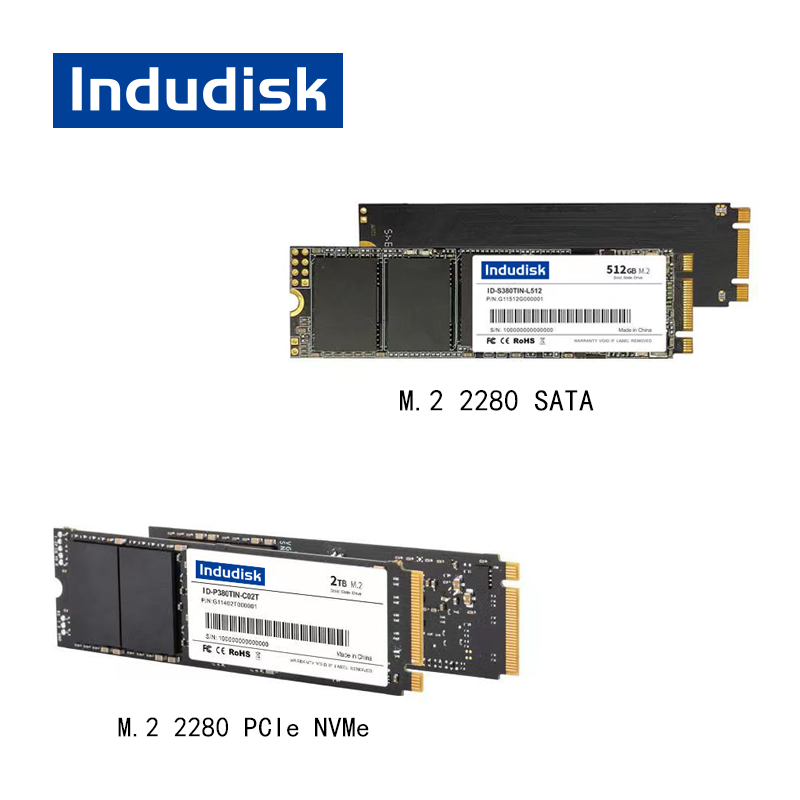When it comes to upgrading your PC or laptop, storage is often the smartest investment you can make. But here’s the catch: not all SSDs are the same. A lot of customers ask me, “M.2, SATA, PCIe, NVMe… what’s the difference? And which one is right for me?”
Let’s break it down in simple terms so you can make the right choice with confidence.
1. What is M.2?
- M.2 is a form factor (the physical shape and size of the SSD).
- Think of it like the design of the card—slim, compact, and perfect for modern laptops and desktops.
- Sizes vary, but the most common one you’ll see is M.2 2280 (22mm wide, 80mm long).
- To use an M.2 drive, your motherboard needs to have an M.2 slot.
2. M.2 SATA SSD vs. M.2 NVMe SSD
- M.2 SATA SSD
- Uses the older SATA interface.
- Speeds: up to 500–600 MB/s.
- A big step up from traditional hard drives, but limited compared to PCIe.
- Good for basic use—web browsing, office work, or light storage upgrades.
- M.2 NVMe SSD
- Uses the PCIe interface for much faster communication.
- Speeds: often 3,000 MB/s and above (some hit 7,000 MB/s+).
- Ideal for gaming, video editing, 3D design, and other demanding workloads.
- Example: Indudisk I6 Pro Series hits around 3,100 MB/s.
👉 Bottom line: If performance matters, go NVMe. If you just need affordable speed over HDDs, SATA still works.

3. PCIe vs. SATA – Why It Matters
- SATA = one data lane → limited bandwidth.
- PCIe = multiple lanes (usually four) → much faster data transfer.
- PCIe combined with NVMe means your computer boots faster, games load quicker, and multitasking feels smoother.
4. What is NVMe and Why Should You Care?
- NVMe (Non-Volatile Memory Express) is a protocol designed specifically for SSDs.
- It takes full advantage of PCIe lanes to deliver lightning-fast performance.
- Supports massive parallelism (up to 64,000 queues, each with 64,000 commands).
- Translation: your system handles more tasks at once with less lag.
5. How to Choose the Right One for You
- Check compatibility: Make sure your motherboard has an M.2 slot, and confirm if it supports SATA, PCIe, or both.
- Match the workload:
- Everyday tasks → M.2 SATA SSD is more than enough.
- Gaming, creative work, or mission-critical apps → M.2 NVMe SSD is worth it.
- Consider capacity: Don’t just look at speed—storage size matters too. If you’re running large apps or storing big media files, go bigger (1TB+).
- Future-proof your system: If your board supports PCIe/NVMe, investing in one now saves you from upgrading again soon.
Final Takeaway
Choosing the right SSD doesn’t have to be complicated. Think of it this way:
Compatibility with your computer is the key factor in choosing an SSD interface. It can be challenging to tell the difference between PCIe and SATA connections if you look at the slot on the motherboard. Check your computer specifications to see which interface your computer supports.
- SATA = Solid speed at a budget
- NVMe + PCIe = Maximum performance with no compromise
At Indudisk, we offer both options—from reliable M.2 SATA drives to high-speed NVMe PCIe SSDs—so you can pick the one that truly fits your needs.
Because in the end, the right SSD isn’t just about storage—it’s about making your entire system faster, smoother, and more reliable.
#NVMeSSD #PCIe4 #HighPerformance #StorageSolution #DataCenter #TechInnovation #EmbeddedSystems

